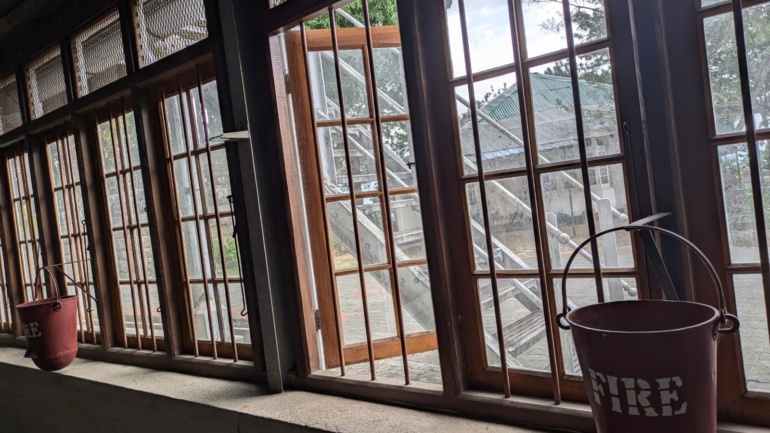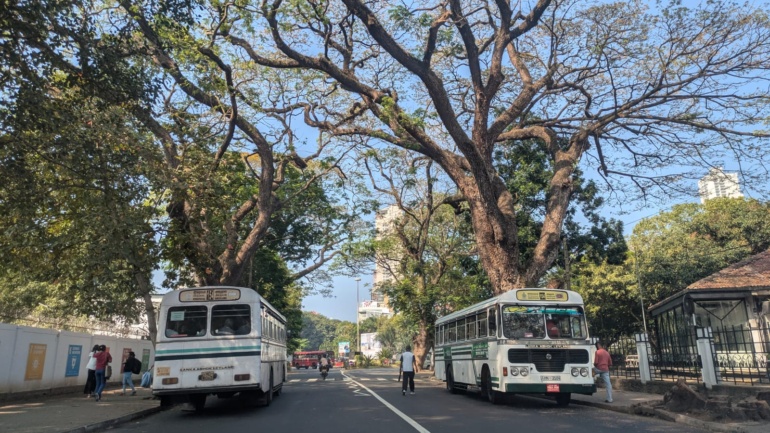The present moment in Sri Lankan politics is one where the campaign strategies of the major political parties appear to be shifting to a new phase. As the possibility of elections gets higher, encounters among different political factions are entering a more intensified phase of confrontation. With the gears shifting, there appears to be little political movement and considerable ambiguity, which translates into voter confusion.
However, a deeper scrutiny of recent political events is indicative of three main tectonic shifts in the political landscape: excessive exercise of power by the establishment elite, the President’s increasingly shrinking political options with the Rajapaksas signalling possible departure, and the National People’s Power (NPP) mobilising a series of trade union strikes.
Establishment elite’s contempt of people’s power
Power concentration among the political elite has risen to unpalatable levels for a public sentiment already stretched to the margins. If the Rajapaksas were corrupt on the back of winning the war and delivering economic growth, the current Government is trying the same on the back of there being no petrol queues and on declared bankruptcy.
One indicator of this is the recent behaviour of Minister of Public Security Tiran Alles, regarding the visa scandal, in his bravado defending why tender procedures were not followed. When the visa scandal was exposed, the police were made to go after the person who streamed a social media video of the long delays and queues at the airport. In a previous statement last month, the Minister encouraged the police to shoot at suspects, saying that “eliminating criminals from the country is not a sin. Don’t be afraid to use the weapon in your hand for the right thing, and we stand by you.” Citing the appeal to the extrajudicial conduct by police, the Bar Association of Sri Lanka passed a resolution demanding the resignation of the Minister.
These expressions of unchecked power come on the back of similar displays of complete disconnect with the people’s sentiments, such as former Health Minister Keheliya Rambukwella’s conduct. The former Minister’s involvement in the procurement of substandard immunoglobulin injections, and later remarks on the proximity of funeral parlours to hospitals and his disregard for the concerns about the quality of a drug linked to a young woman’s death suggested a deficiency in both empathy and accountability. The arrogance with which individuals within the ruling regime exercise political power openly mocks the sentiment and demands of the Aragalaya, where people reclaimed their collective power.
Rajapaksas signalling departure
After a series of discussions between President Ranil Wickremesinghe and Basil Rajapaksa, the Rajapaksa faction of the Sri Lanka Podujana Peramuna (SLPP) seems to be pulling out its support of Wickremesinghe’s Government. The SLPP is regrouping and attempting to consolidate its identity, which received a sharp blow during the events of 2022. Having ensured its safety in a context of political volatility, the SLPP is now in a position to consider the merits of a coalition with President Wickremesinghe on the basis of what gives it an electoral edge.
The most recent development in this emerging trend was the statement issued on 12 May by former President Mahinda Rajapaksa, that restructuring state-owned enterprises (SOEs) must only be considered after an election. Namal Rajapaksa had already being trying to advance this narrative of ‘protecting state assets.’ However, MP Mahinda Rajapaksa’s statement coincides now with the rhetorical line of the NPP, that the present Government lacks a mandate to execute SOE reforms, indicating the overlapping voter bases of the two parties.
The SLPP’s strong rhetoric against the NPP in their May Day rally marked the former’s attempt to position itself as the main centre-left alternative to the NPP’s meteoric rise in popularity. The similarity in policy stance, as on the SOE issue, compels the SLPP to distinguish themselves from the NPP on other fronts. One such strategy is to remind the people of the Janatha Vimukthi Peramuna’s (JVP)—the main party of the NPP— history of violence.
When the JVP was accused of murder by SLPP MPs in a recently televised discussion, specifically mentioning SLPP MP D. Weerasinghe’s father as one of the victims, NPP stalwart Nalin Hewage responded “there were indeed some deaths of murderers and rapists during that time, I am not aware whether Weerasinghe’s father was among them.” The evident lack of empathy of this response illustrates the NPP’s ill-preparedness to handle allegations of its past violence in a tactful manner, and which has been capitalised by the SLPP since.
Meanwhile, trying to become the common candidate to face off the NPP, President Wickremesinghe repeatedly shot down the SLPP’s demands to hold parliamentary elections before presidential elections. The only concession the SLPP was given was the issuance of a circular on 29 April re-appointing former Local Government (LG) members as Community Advisory Committee members, to effectively consolidate SLPP power at the LG level. However, the Elections Commission issued an advisory directive on 7 May against the process, on grounds that LG elections are pending and that appointing former members in such positions may undermine electoral fair play.
This development practically marks the limits of collaboration between the SLPP and President Wickremesinghe. It seems increasingly fruitless for the SLPP to remain a coalition partner with President Wickremesinghe without losing its identity and electoral appeal.
The President’s shrinking options
This is the backdrop to the President’s loud silence on the recent conduct of his ministers. The centre appears to not hold anymore, and ministers and his loyalists are exercising power with impunity. The President likely recognises that he is third in the race as a presidential candidate and his supporters’ brags to lure breakaways from the SLPP, Samagi Jana Balawegaya (SJB), and Sri Lanka Freedom Party (SLFP) have fallen short. Further, despite repeated attempts to court Tamil minority political parties, including promises to solve the ‘ethnic question’ by Independence Day last year, and full implementation of the 13th Amendment to the Constitution, he has little to show for it.
Part of the non-Northern Tamil vote also appears to be leaning towards the SJB. Besides, Muslim minority political parties remain non-committal to any major political party. The President’s dilemma with regard to all minority parties is that any party that builds an electoral coalition with the Rajapaksa faction of the SLPP is unlikely to get their support.
The SJB too is in a vulnerable position, having not yet tasted any electoral victories. While there is no significant reason why its 42% voter-base consolidated in 2019 has diminished, there is also no assurance that it would perform so well as to secure an electoral lead in an upcoming presidential election. Further, the current tug-of-war within the SLFP also indicates that it is yet to decide who it will electorally align with. Despite its small size, the SLFP’s legacy and centre-left credentials can contribute significantly to legitimising a potential senior coalition partner.
Currently, an electoral agreement between the President and the SJB seems impossible, since neither Ranil Wickremesinghe nor Sajith Premadasa seem ready to give up on their potential presidential bid. However, the realisation that one is unlikely to become President alone may lead these leaders to make personally undesirable but politically expedient decisions.
Meanwhile, the President’s attempts to buy over voters by concessions and goodies, such as the Urumaya land program and rice rations, will saturate at some point. His supporters are banking on the delivery of an economic grandshow around June, that will win over the sceptics and the unconvinced. Already, the President has announced a potential salary hike for public servants. This and other perks may be possible with more favourable debt restructuring agreements, giving him more fiscal freedom. However, the very delivery of these promises is doubtful, and even if they are met, how well they translate into a critical mass of votes to propel Wickremesinghe to become one of the two main presidential candidates is questionable.
These events may culminate in a situation where the President realises his failed presidential pitch. This may in turn cause the President to shift gears swiftly, disrupting the present political equilibrium by dissolving Parliament. In the chaos which follows, the President may seek an opportunity to increase his electoral relevance.
Intensifying politics of confrontation
Currently, a number of trade union-led strikes are under way, driven by economic anger, and resistance to some SOE reforms. This is not a trend unique to Sri Lanka. It was reported by Carnegie Endowment for International Peace that rising citizen anger about economic problems, especially surging inflation, drove anti-government protests to a new high in 2022. Of these protests, only Sri Lanka and Kazakhstan’s protests had resulted in political change.
For the new entrant, the NPP, maintaining political momentum is a challenging task. This requires continuously creating political events to establish their electoral relevance. Mobilising trade union strikes seems to be the most effective tool they have, after mobilising women and youth-focused ‘hope campaigns’. As a result, a lot more disruptions in public service delivery are likely in the near future. The Government’s dismissive approach to opposition by government servants and professionals over economic reforms has further polarised the discourse. As these disruptions heighten, the NPP is the net gainer.
Rajni Gamage and Harindra B Dassanayake
This article was originally published in the Daily FT on 21 May 2024.
Image Copyright (c) 2024 Nazly Ahmed and made available under an Attribution-Noncommercial-Share Alike 2.0 license



